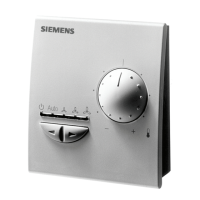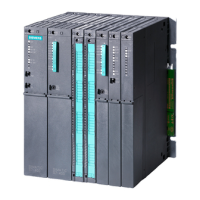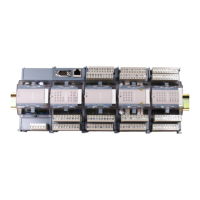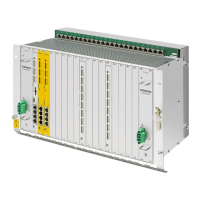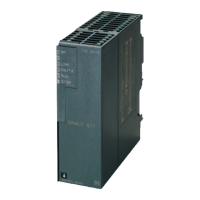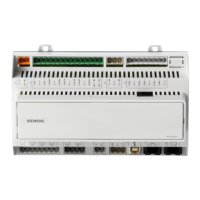Communications configuring
3-136 System- and communication configuring D7-SYS - SIMADYN D
Edition 12.2003
3.11 DUST7 coupling
3.11.1 General
The DUST7 coupling is a basic, serial point-to-point connection. The
communication utilities, process data and message system, can use the
DUST7 coupling.
The main use of the DUST7 coupling is:
• to transfer process data to devices with basic serial interfaces or PCs
with the customers own applications, or
• to output messages on simple terminals.
In addition to the pure net data, an optional configurable end of telegram
with maximum 2 characters is transferred. If an end of telegram has not
been configured, then the end of telegram is identified by an interval time
of 4 character times.
3.11.2 Hardware
The following hardware is required for the DUST7 coupling:
• Subrack
• CPU
• CS7 module with SS4 communications module (this must also be
configured in HWConfig)
An RS232 interface is used which can also be changed over to 20 mA or
RS485 by inserting an SS2 or SS3 interface module.
3.11.3 Configuring
The @CSD07 central coupling block must be configured. The character
frame and the end of telegram can be configured at its initialization
inputs.
Further information
on the @CSD07 central block, refer to the User Documentation
"SIMADYN D, function block library".
A maximum of one transmit block and one receive block (CTV and CRV)
may be configured. Only a channel name must be specified as address
parameter (AT-, AR input). The channel name must be different for the
transmitter and receiver.
One or several message output blocks (MSIPRI) can be configured. If
several message output blocks are configured, then their channel names
must be identical ("Select" data transfer mode).
Using the DUST7
coupling
Hardware required
Central DUST7
coupling block
Process data,
transmitter and
receiver
Message output
block

